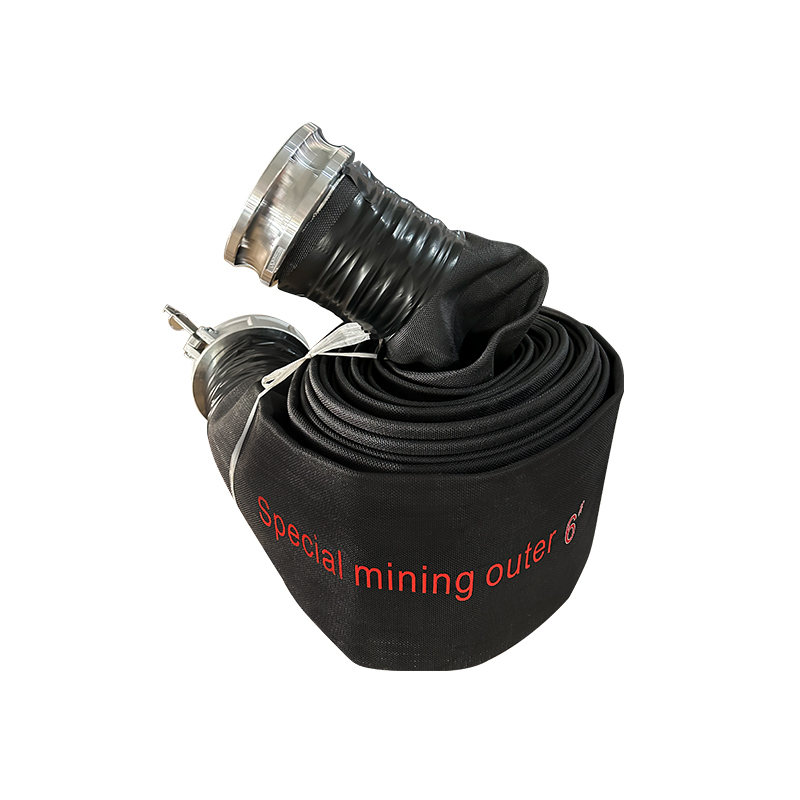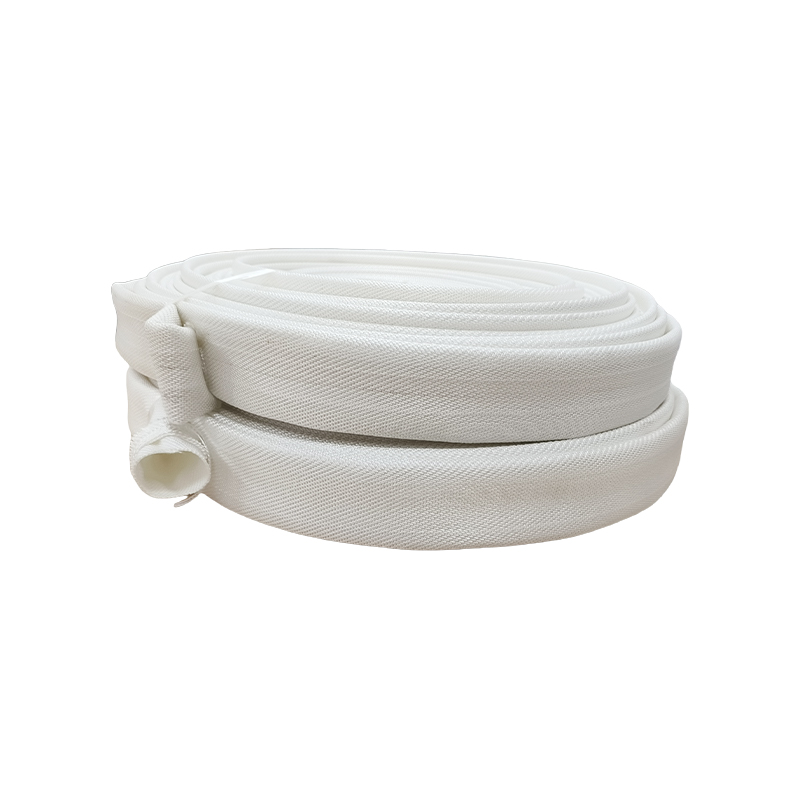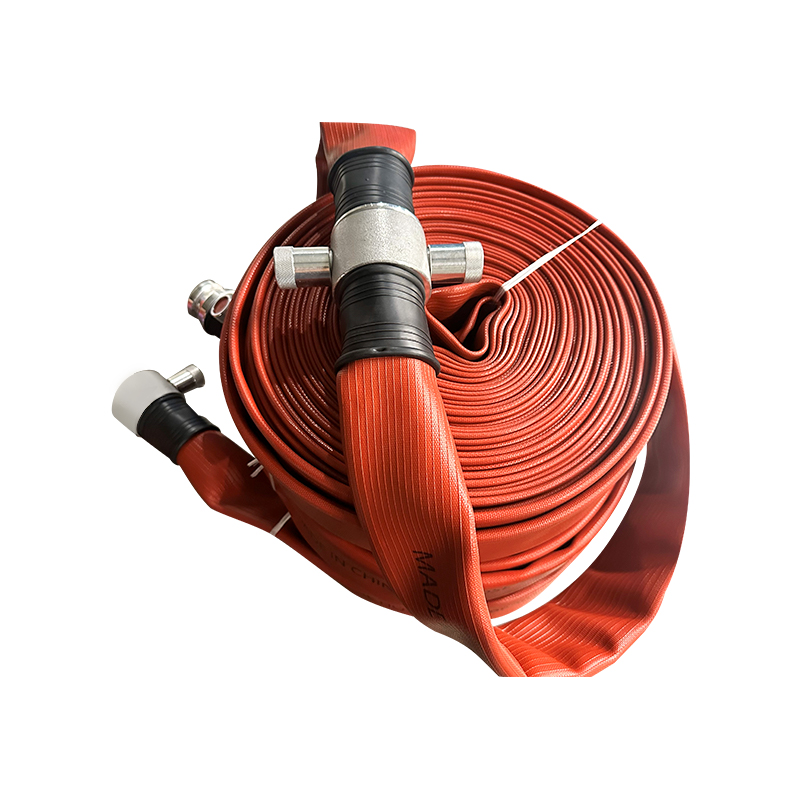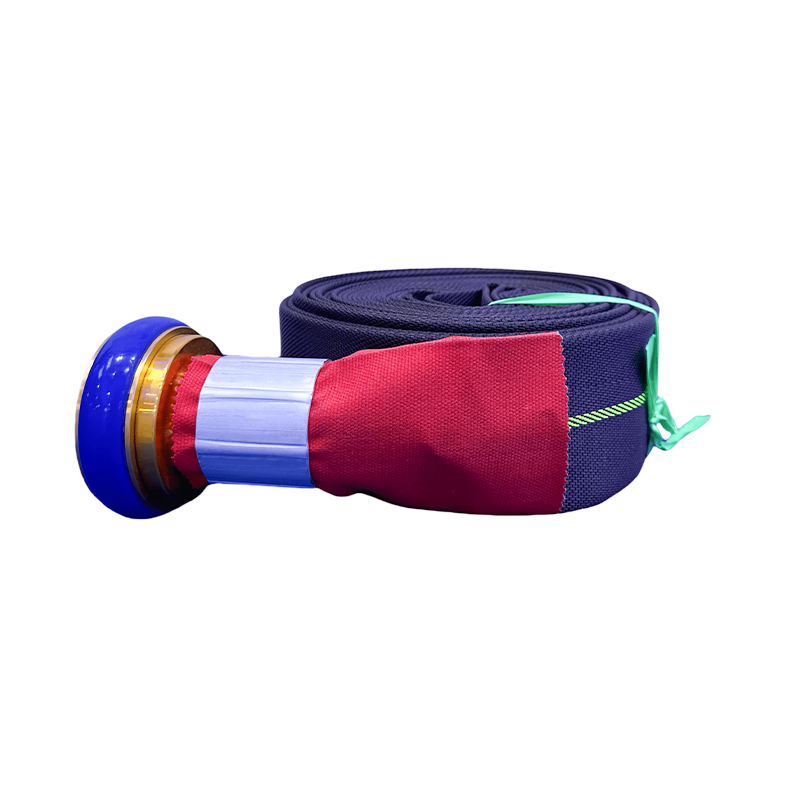- 1 The Importance and Challenges of Mine Dewatering
- 2 Why is a Special Mining Dewatering Hose Needed?
- 3 Special Mining Outer Dewatering Hose: Technical Advantages and Applications
- 4
- 5 How to Choose the Right Special Mining Outer Dewatering Hose?
- 6 Future Outlook for the Special Mining Outer Dewatering Hose
- 7 Frequently Asked Questions (FAQ)
The Importance and Challenges of Mine Dewatering
In mining operations, dewatering is a crucial foundational task that directly impacts the mine's safety, production efficiency, and economic benefits. Various water sources, including groundwater, surface water, and precipitation, continuously flow into mine shafts and excavation areas. If not effectively controlled and discharged, this can lead to a series of severe challenges.
First and foremost, mine flooding is the number one threat to mine safety. Large amounts of accumulated water can not only submerge work areas and damage equipment but can also trigger major accidents like collapses and landslides, threatening miners' lives. Therefore, establishing an efficient and reliable dewatering system is fundamental to ensuring stable and continuous mine production.
However, mine dewatering faces multiple challenges that place extremely high demands on dewatering equipment, especially on the core Special Mining Outer Dewatering Hose:
- Complex and Variable Environments: The internal environment of a mine is complex, with rugged terrain, sharp rocks, and hard soil, which pose a significant test to the hose's abrasion resistance and pressure bearing capacity.
- Specificity of Media: Mine water is not just clean water; it is often a mixture containing large amounts of solid particles like mud, sand, rocks, and tailings slurry. These particles cause severe abrasion to the pipe's inner wall, which ordinary hoses cannot withstand for long.
- High-Pressure and High-Flow Demands: To discharge large volumes of water in the shortest time possible, the dewatering system needs to withstand high water pressure and ensure high-flow delivery. This requires the hose to have excellent burst-proof capabilities.
- Rapid Deployment and Retrieval: Especially during emergency rescue or when moving a work area, the dewatering system needs to be quickly installed and dismantled. A flexible and lightweight hose has a significant advantage over rigid pipes in the complex terrain of a mine.
It is precisely due to these challenges that specialized equipment like the Special Mining Outer Dewatering Hose was developed. Compared to traditional steel pipes or ordinary rubber hoses, this special mining dewatering hose offers significant performance advantages.
| Feature Comparison | Special Mining Outer Dewatering Hose | Traditional Pipes (e.g., ordinary rubber hose, steel pipe) |
| Abrasion Resistance | Inner wall uses high-abrasion-resistant materials, can effectively transport sand and mud slurry, with a longer lifespan. | Ordinary rubber hoses wear out quickly, and the inner wall of steel pipes can be easily eroded. |
| Weight | Lightweight, easy to transport and deploy, can be coiled for storage. | Heavy, difficult to transport, and occupies a large amount of storage space. |
| Pressure Resistance | Uses high-strength fiber braided layers to withstand high pressure and is not prone to bursting. | Limited pressure capacity, poses a safety risk in high-pressure conditions. |
| Flexibility | Good flexibility, can adapt to complex terrain, avoiding the need for excessive joints. | Rigid, requires many elbows and joints, complicating installation. |
| Corrosion Resistance | Some models have acid and alkali resistance, suitable for corrosive water. | Prone to corrosion, which shortens its lifespan. |
Why is a Special Mining Dewatering Hose Needed?
The harshness of the mining environment dictates that traditional hoses are not up to the task of dewatering. Therefore, the emergence of specialized dewatering hoses like the Special Mining Outer Dewatering Hose is a necessity. These hoses are designed specifically for the high-challenge environment of mines, and their performance far exceeds that of ordinary pipes.
1. The Uniqueness of the Mining Environment
The mining operation environment is extremely harsh, mainly reflected in the following aspects:
- Rocks and Sand: Mine shafts and excavation areas are covered with rocks and gravel. Ordinary hoses can easily be scratched or punctured during dragging and use, leading to leaks.
- Complex Terrain: Mine terrain is undulating and winding, requiring hoses to be flexible for laying. Rigid pipes require numerous joints and elbows, which increases installation difficulty and the risk of leaks.
- High-Pressure Delivery: To quickly discharge water from deep within mine shafts or pits, the dewatering system requires high head and water pressure. Ordinary pipes often cannot withstand such high pressure, posing a risk of bursting.
2. The Crucial Role as a “Tailings Dewatering Pipe”
In mining operations, tailings processing is an important step. Tailings are typically a slurry containing a large number of solid particles, making them highly abrasive. The Special Mining Outer Dewatering Hose, as a specialized “tailings dewatering pipe,” has an inner wall made of a special wear-resistant material. It can effectively resist the scouring and abrasion from tailings particles, ensuring the pipe remains intact during long-term, high-intensity delivery, which significantly reduces maintenance costs and replacement frequency.
3. Characteristics of a “Wear-Resistant Slurry Hose”
The Special Mining Outer Dewatering Hose is a typical “wear-resistant slurry hose,” and its core advantages include:
- Excellent Abrasion Resistance: Utilizes special composite materials and manufacturing processes, giving its inner wall extremely high wear resistance, which is several to dozens of times greater than that of ordinary rubber hoses.
- High Pressure Resistance: The hose's interior is reinforced with high-strength synthetic fiber braiding, enabling it to withstand high-pressure and high-flow conditions, ensuring dewatering safety.
- Lightweight and Flexible: Compared to heavy steel pipes, this hose is lightweight and highly flexible, making it easy to transport, install, and store. This is especially suitable for mine operations that require frequent movement.
- Anti-Aging and Weather Resistance: The outer layer of the hose typically has UV resistance, anti-aging, and weather resistance, allowing for long-term use in harsh outdoor environments without cracking.
These unique features make the Special Mining Outer Dewatering Hose an ideal choice for solving mine dewatering challenges. It not only improves dewatering efficiency but, more importantly, ensures the safety and sustainability of mining operations.
Special Mining Outer Dewatering Hose: Technical Advantages and Applications
The Special Mining Outer Dewatering Hose is a dewatering hose specifically designed to handle the complex environment of mines. Its outstanding technical advantages allow it to play an irreplaceable role in various mine dewatering scenarios.
Technical Advantages
1. High Strength and Pressure Resistance
One of the core advantages of this hose is its high-strength structure. It is typically a composite of multiple layers, with an inner layer made of highly wear-resistant and corrosion-resistant synthetic rubber or polymer, a middle layer of high-strength fiber braiding for reinforcement, and an outer layer for anti-aging and weather protection. This structure allows it to withstand extremely high working pressures, far exceeding that of ordinary hoses. For example, in some high-lift dewatering projects, the internal pressure can reach several megapascals, and the Special Mining Outer Dewatering Hose can operate stably, effectively preventing burst accidents and ensuring the safety of the dewatering system.
2. Flexibility and Convenience
Unlike heavy steel pipes, the Special Mining Outer Dewatering Hose has excellent flexibility. It can be easily coiled for storage, making it convenient to transport to various corners of a mine. During installation, it can adapt to rugged terrain, reducing the need for numerous elbows and joints, which significantly shortens installation time and lowers the risk of leaks. Its lightweight nature also makes rapid deployment possible during emergency rescue operations.
3. “Industrial Large-Bore Hose”
To meet the large-scale dewatering needs of mines, the Special Mining Outer Dewatering Hose is typically designed with a large bore. A large bore can significantly increase the dewatering flow rate, allowing for more accumulated water to be discharged in the same amount of time, thereby improving dewatering efficiency. This is particularly crucial in scenarios that require rapidly draining mine shafts or pits to resume production.
| Parameter | Special Mining Outer Dewatering Hose | Traditional Pipes (e.g., PVC pipes) |
| Bore | Can be hundreds of millimeters or larger, suitable for high-flow dewatering needs. | Common bores are relatively small, with limited flow, not suitable for large-scale dewatering. |
| Working Pressure | Designed for high working pressure, can withstand extreme high-pressure conditions. | Weak pressure resistance, prone to bursting under high pressure. |
| Lifespan | Abrasion-resistant and corrosion-resistant, with a long lifespan of several years. | Prone to aging and wear, with a short lifespan, requiring frequent replacement. |
| Installation Speed | Quick connection, easy to deploy and dismantle. | Installation is cumbersome, requiring adhesives or heat fusion, and is time-consuming. |
Applications
The versatility of the Special Mining Outer Dewatering Hose allows it to be widely applied in various stages of the mining industry:
- “Dedicated Mine Pumping Hose”: In open-pit mines and underground mine shafts, it is used as the main dewatering channel to efficiently transport accumulated water, mud, and other media to the surface.
- Tailings Processing: In tailings ponds and processing plants, it is used to transport tailings slurry containing a large number of solid particles. Its abrasion-resistant properties ensure the pipe remains stable and reliable under highly abrasive conditions.
- Emergency Dewatering: In emergency situations such as sudden flooding or a major water influx, this hose can be rapidly laid out as a temporary “industrial large-bore hose” for high-flow emergency dewatering, gaining valuable time for rescue.
- Equipment Connection: It serves as a complementary hose for mining submersible pumps, sewage pumps, and other equipment, forming a complete dewatering system to ensure the safely and effective delivery of pumped media to the designated location.
6-Inch Wear-Resistant Flat Hose With Storz Connector For Mining-Grade External Drainage
How to Choose the Right Special Mining Outer Dewatering Hose?
Choosing the right Special Mining Outer Dewatering Hose is crucial for ensuring the safety, efficiency, and cost-effectiveness of a mine's dewatering system. The wrong choice can lead to frequent pipe ruptures and abrasion, increasing operational costs and the risk of downtime. Before making a decision, you need to consider the following key factors comprehensively:
1. Operating Environment and Media to be Transported
- Media to be Transported: This is the most important consideration when choosing a hose.
- Clean Water: If the hose is primarily used for transporting relatively clean water from a mine shaft or the surface, the requirement for abrasion resistance is lower, but pressure resistance and flexibility are still critical.
- Muddy Slurry or Tailings Slurry: This type of medium is highly abrasive. You must choose a high-abrasion-resistant hose with a specially treated inner wall to withstand the long-term scouring from solid particles.
- Temperature and Corrosiveness:
- Temperature: The temperature in a mine environment can vary greatly. Ensure that the chosen hose material can maintain its performance within the expected maximum and minimum temperatures.
- Chemical Corrosion: Some mine water may contain acidic or alkaline substances. If the dewatering medium is corrosive, a hose made of corrosion-resistant materials is necessary.
2. Technical Parameters
After determining the operating environment, you need to match the hose's technical parameters to your specific engineering needs.
| Parameter | Explanation and Selection Advice |
| Working Pressure | The continuous pressure the hose can withstand. The working pressure should be higher than the maximum pressure generated by the dewatering pump's head, with a safety margin. |
| Burst Pressure | The maximum instantaneous pressure the hose can withstand. This parameter measures the hose's safety and should be far higher than the working pressure. |
| Inner Diameter (ID) | The hose's inner diameter determines the dewatering flow rate. Based on the pump's flow rate and the required dewatering efficiency, choose an appropriate bore. A bore that is too small will increase flow velocity and friction, leading to higher energy consumption and pipe abrasion; a bore that is too large will reduce flow velocity, affecting dewatering efficiency. |
| Length | Determine the length based on the actual mine terrain and dewatering distance. Minimize connection points to reduce the risk of leaks. |
| Minimum Bend Radius | An important parameter for measuring the hose's flexibility. In mines with complex terrain, a hose with a small bend radius and good flexibility is needed for easy laying. |
| Weight | The weight of the hose per meter. A lightweight hose is easier to transport, install, and store, especially in scenarios that require frequent movement. |
3. Structure and Material
- Inner Liner: For media with a high sand content, choose materials with high abrasion resistance, such as high-molecular polymers or special composite rubber.
- Reinforcement Layer: This is the core component that determines the hose's pressure capacity. High-quality Special Mining Outer Dewatering Hose uses high-strength synthetic fibers (like polyester fiber) for braided reinforcement to ensure it does not deform or burst under high pressure.
- Outer Covering: Used to protect the hose from the external environment. Choose a material that is abrasion-resistant, anti-aging, and weather-resistant to handle the harsh mine environment, such as rocks and UV light.
In summary, choosing the right Special Mining Outer Dewatering Hose is a systematic process that requires finding the best balance between performance, cost, and application scenario. By carefully evaluating the above factors, you can ensure that the selected hose can perform the dewatering task efficiently and safely.
Future Outlook for the Special Mining Outer Dewatering Hose
As mining technology advances and environmental regulations become stricter, the future development of the Special Mining Outer Dewatering Hose will focus on higher performance, intelligence, and sustainability. Future specialized dewatering hoses will not just be tools for transporting media; they will become key components of integrated, intelligent mine dewatering systems.
1. Higher Performance and New Material Applications
Future hoses will further improve performance to handle more complex and extreme mine environments.
- Lightweight and High Strength: By researching and developing lighter, stronger composite materials, future hoses will be even lighter while maintaining or exceeding the pressure capacity of current products. This will significantly reduce transportation and installation costs, especially in remote or topographically complex mining areas.
- Ultra-Abrasion-Resistant Inner Liner: Scientists are researching and applying new nanocomposite materials to create inner liners with ultra-high abrasion resistance. This will allow the hose to better withstand high-concentration sand and rock-containing media, greatly extending its lifespan and reducing the frequency of replacement and downtime caused by abrasion.
- Extreme Temperature Resistance: Future hoses will be able to adapt to a wider range of temperatures, maintaining stable flexibility and strength in both extremely cold Arctic mines and hot desert regions, unaffected by environmental temperature changes.
2. Intelligence and Integration
Integrating intelligent technology into the Special Mining Outer Dewatering Hose will be a significant future direction.
- Real-time Monitoring Systems: Future hoses may have built-in sensors that can monitor internal pressure, flow rate, temperature, and even the degree of wear in real-time. This data can be wirelessly transmitted to a central control system, helping managers promptly detect potential leaks or blockages, enabling predictive maintenance, and preventing accidents.
- State Prediction and Maintenance: Through big data analysis and machine learning, the system can predict the hose's remaining lifespan based on its operational data. This allows mine managers to plan hose replacement in advance, enabling more precise maintenance rather than a reactive approach after the hose fails.
3. Sustainability and Environmental Protection
As global attention to sustainable development and environmental protection grows, the manufacturing of the Special Mining Outer Dewatering Hose will also focus more on eco-friendliness.
- Recyclable Materials: Future hoses may be made from recyclable or biodegradable materials, reducing the environmental burden.
- Energy-Efficient Design: By optimizing the internal structure to reduce fluid friction, energy consumption of the dewatering pumps can be lowered, leading to a more efficient and greener dewatering operation.
In conclusion, the future development direction of the Special Mining Outer Dewatering Hose is moving toward greater intelligence, durability, and eco-friendliness. With the implementation of these technologies, future mine dewatering systems will be safer and more efficient, providing strong support for the sustainable development of the mining industry.
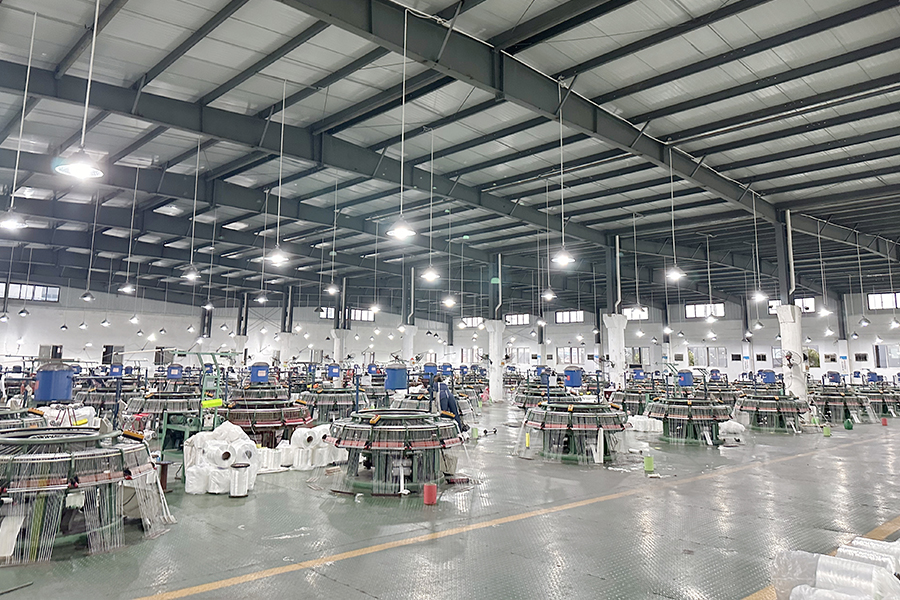
Frequently Asked Questions (FAQ)
1. What are the unique advantages of the special mining dewatering hoses manufactured by Taizhou Jun'an Fire Technology Co., Ltd.?
Taizhou Jun'an Fire Technology Co., Ltd. is an enterprise specializing in the production of fire hoses, fire equipment, and emergency rescue equipment. The company has fully absorbed the advantages of similar products both domestically and internationally. We have extensive experience in designing and manufacturing hoses for harsh environments. Our Special Mining Outer Dewatering Hose uses high-strength, wear-resistant materials to ensure excellent durability when transporting highly abrasive media like sandy slurry and tailings slurry. Additionally, we have a professional management and technical team that can provide customized solutions to ensure products meet the specific needs of different mining environments.
2. How can we ensure we choose the most suitable special dewatering hose for our mine environment?
Choosing the right hose requires a comprehensive consideration of multiple factors, such as the type of dewatering media (clean water, sandy slurry), working pressure, flow rate requirements, and the temperature and terrain of the operating environment. Taizhou Jun'an Fire Technology Co., Ltd. has a team of professional engineers who can provide you with expert consultation and technical support based on your specific needs and on-site conditions. We can custom-manufacture Special Mining Outer Dewatering Hose with different bores, pressure ratings, and abrasion resistance levels based on your specified parameters, and we also offer OEM and ODM services to ensure you get the most suitable solution.
3. How does Taizhou Jun'an Fire Technology Co., Ltd. ensure product quality and after-sales service for its special dewatering hoses?
As an enterprise with modern and advanced production equipment and professional management personnel, Taizhou Jun'an Fire Technology Co., Ltd. strictly controls product quality. Our products undergo rigorous quality inspections before leaving the factory to ensure they meet industry standards. The company is dedicated to providing first-class equipment and high-quality after-sales service to both domestic and foreign customers. If you are interested in our products or encounter any issues during use, please feel free to contact us or visit our company directly. We are committed to providing you with support and assistance and look forward to establishing a long-term business relationship with you.


 en
en
 عربى
عربى

